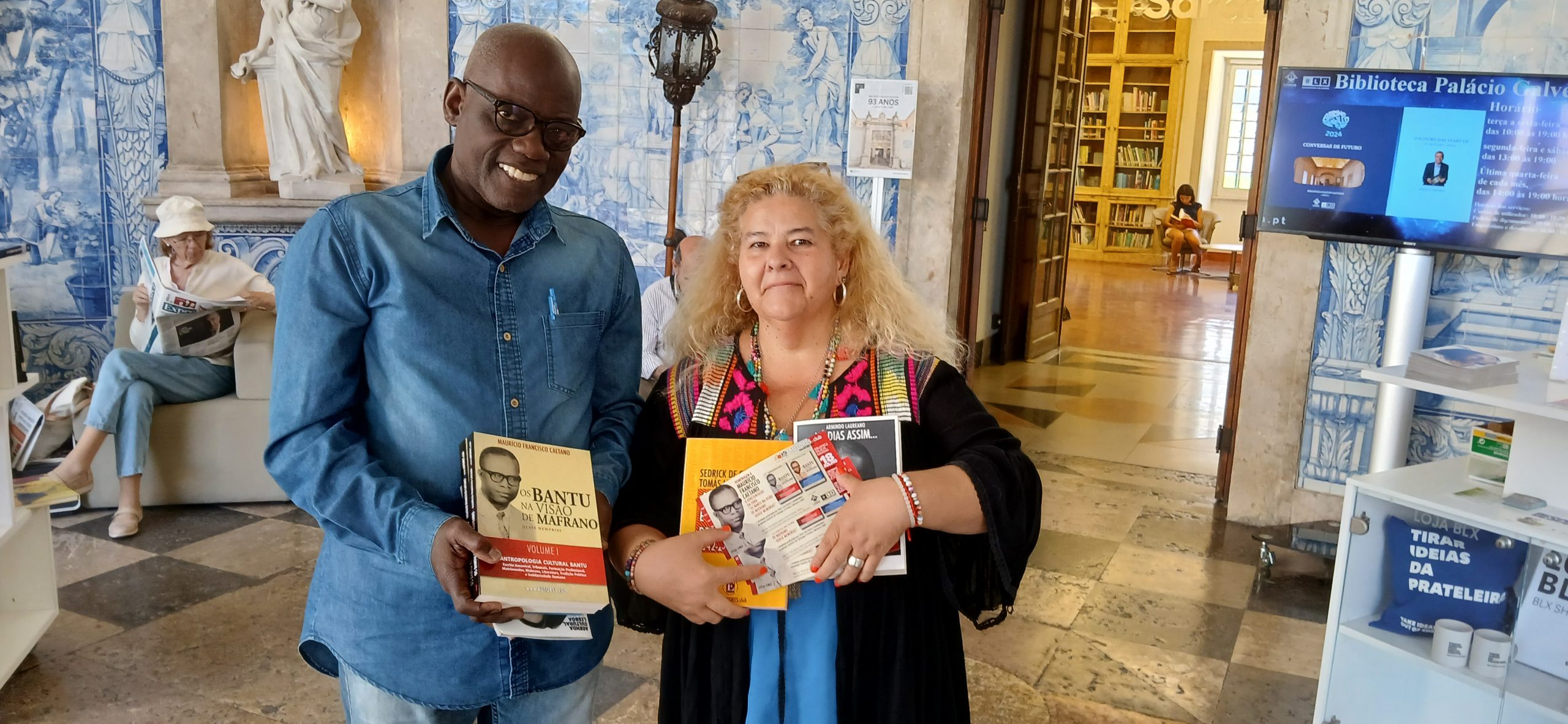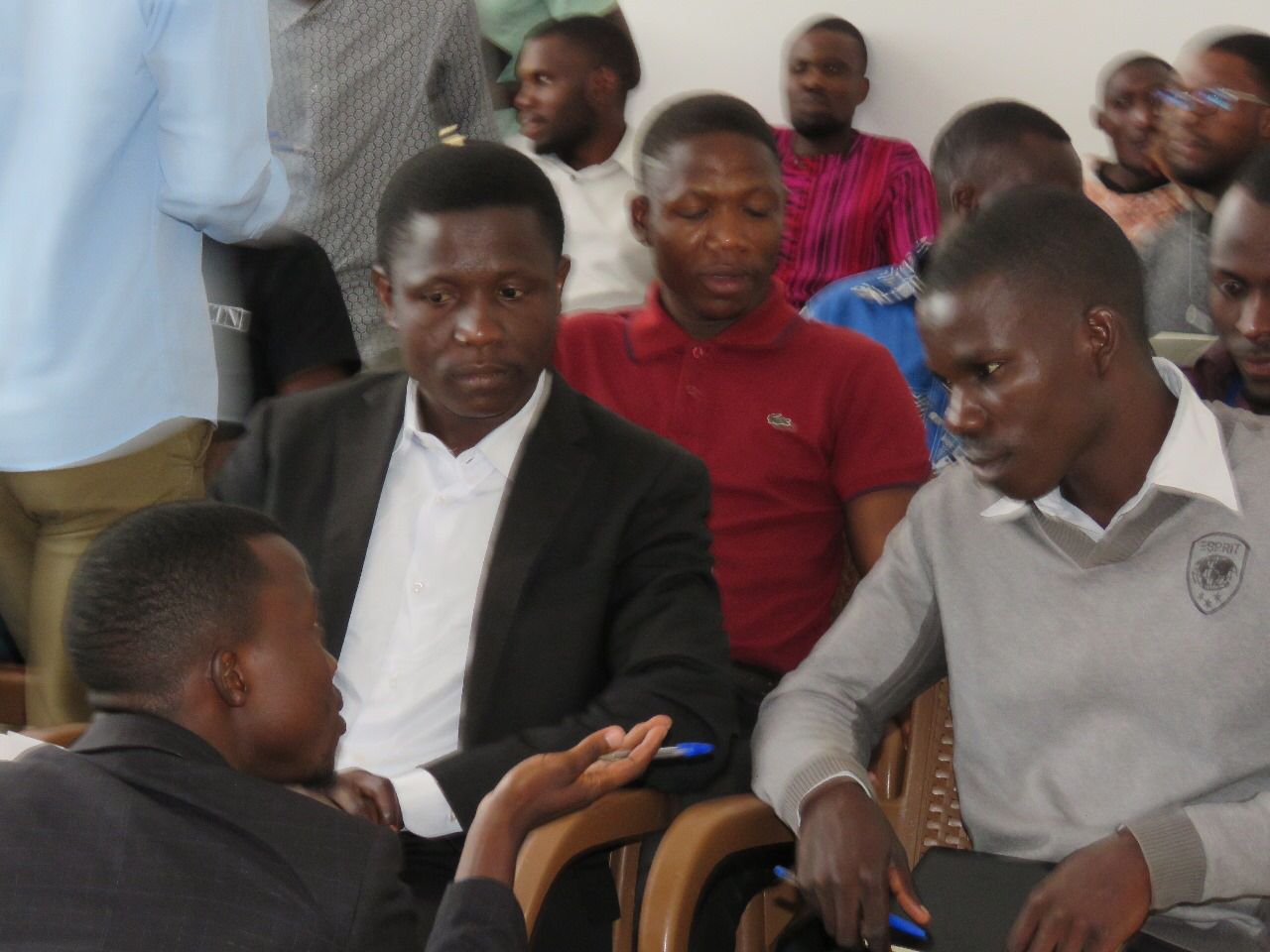«Autores e Escritores de Angola» e «Os Bantu na visão de Mafrano», três obras apresentadas na Casa Comum da Universidade do Porto

A Universidade do Porto, o Porto’s África, a família de Maurício Francisco Caetano (Mafrano), os autores Sedrick de Carvalho e Tomás Lima Coelho e o editor convidam V/ Exa para a apresentação do primeiro e do segundo volume da coletânea «Os Bantu na visão de Mafrano – Quase Memórias», de Maurício Francisco Caetano (1916-1982), e para apresentação da terceira edição atualizada da obra «Autores e Escritores de Angola 1642 – 2022» (Ed. 2024), de Sedrick de Carvalho e Tomás Lima Coelho, a ter lugar no dia 9 de agosto de 2024 na Casa Comum da Universidade do Porto.
Convidado Especial: José Luandino Vieira* (com o apoio de Porto’s África)
Local: Universidade do Porto | Casa Comum. Praça Gomes Teixeira 4099-002 Porto.
- José Luandino Vieira, pseudónimo literário de José Vieira Mateus da Graça
Casa Comum da Universidade do Porto
A Casa Comum é um espaço dedicado à partilha de saberes e à promoção da cultura dentro da Universidade do Porto. Localizada no edifício histórico da Reitoria da Universidade do Porto, na emblemática Praça Gomes Teixeira (também conhecida como Praça dos Leões), este local oferece uma vasta gama de atividades culturais que incluem cinema, exposições, literatura, música, performances, aulas abertas, seminários científicos e culturais, bem como oficinas para crianças.
Com um auditório e duas salas de exposições, a Casa Comum está equipada para acolher uma diversidade de eventos e iniciativas. Além do espaço físico, a Casa Comum também se expande para o ambiente digital, onde publica regularmente podcasts sobre temas de cultura e ciência, permitindo assim um alcance mais amplo e inclusivo.
A Casa Comum Cultura U.Porto tem como principal objetivo democratizar o acesso à cultura e ao conhecimento. Para tal, promove diversas atividades culturais que incentivam o espírito crítico, criativo e solidário. Este espaço também serve como um ponto de encontro e expressão para os grupos de extensão cultural da Universidade do Porto, como o Orfeão Universitário do Porto (OUP), o Teatro Universitário do Porto (TUP), o Coral de Letras, o NEFUP, a Sociedade de Debates, e os Antigos Orfeonistas, entre outros.
Assim, a Casa Comum não é apenas um local de eventos, mas um verdadeiro centro de convergência cultural, científico e social, onde a comunidade académica e a população em geral podem se encontrar e compartilhar conhecimentos e experiências.

Reportagem da TPA na apresentação em Lisboa
Reportagem da TPA — Televisão Pública de Angola — sobre a apresentação de livros de autores de Angola na Biblioteca Palácio Galveias (Lisboa). Na tarde de 18 de Julho de 2024, entre as 18h00 e as 21h00, foram apresentadas as obras «Autores e Escritores de Angola 1642-2022», de Sedrick de Carvalho e Tomás Lima Coelho, e «Os Bantu na visão de Mafrano — Quase Memórias», do escritor e etnólogo angolano Maurício Francisco Caetano, um evento realizado no «Dia de Nelson Mandela».
Reportagem de Romão Alves e Gabriel Niva para a TPA, com apoio da Embaixada da República de Angola em Portugal
Jornal de Angola: Lisboa testemunha homenagens a Mandela, Mafrano e Cónego José Frotta
«Os Bantu na visão de Mafrano – Quase Memórias»
A colectânea «Os Bantu na visão de Mafrano – Quase Memórias», antropologia cultural, do escritor e etnólogo angolano Maurício Francisco Caetano, “Mafrano” (1916-1982), será apresentada ao fim da tarde do dia 09 de agosto de 2024. A apresentação dos dois primeiros volumes da obra está a ser rodeada de bastante expectativa pelo seu conteúdo e, sobretudo, pela sua ancestralidade.
A colectânea póstuma «Os Bantu na visão de Mafrano» é uma obra póstuma, em três volumes e mais de 700 páginas sobre a ancestralidade, hábitos e costumes de uma faixa muito numerosa dos povos africanos. Inclui epígrafes como «Crónicas ligeiras», «Notas a lápis», «Episódios vividos», «Tertúlias» e outros textos e contos dispersos, compilados a partir de estudos e reflexões que o autor publicou em jornais e revistas de Angola, entre 1947 e 1982.
Em África, os povos Bantu espalham-se por 24 países e aproximadamente 200 grupos étnicos, incluindo a África do Sul, Angola, Botswana, Burundi, Camarões, nos Congos (Democrático e Brazzaville), Gabão, Lesotho, Moçambique, Quénia, Ruanda, Tanzânia, Zâmbia, Zimbabwe.
A colectânea inclui temas como o uso do telégrafo, (o ngolokele), entre os povos bantu, desde tempos remotos; a escrita ancestral; a formação profissional; os matrimónios; a tradição política; os topónimos bantu e a sua lenda; a filosofia bantu sobre a morte e a origem do homem; relatos de Cabinda; hábitos e crendices alimentares, e outros temas sobre a antropologia, a arqueologia e o direito costumeiro.
Neste espólio literário escrito ao longo de 36 anos, Mafrano realça pontos de contacto das lendas da civilização bantu com a mitologia clássica, sem esquecer as mitologias greco-romanas, e constrói diálogos que nos fazem comparar a civilização bantu a de vários países, como a Alemanha, a China, os Estados Unidos, a França, a Itália, Portugal e o Reino Unido. O norte americano Franz Boas (1858-1942) e o padre espanhol Raul Ruiz de Asua Altuna (?-2004) são dois dos especialistas em antropologia cultural que Mafrano menciona nos seus estudos e pesquisas.
Em Angola, Maurício Caetano foi professor e oficial de impostos, antes de uma longa carreira nos Serviços Gerais de Fazenda e Contabilidade, no período colonial, até ser nomeado Director Nacional no Ministério das Finanças, depois da independência de Angola, em 1975. O autor foi ainda membro fundador da União dos Escritores Angolanos (UEA), e destacou-se como professor de Português e de Filosofia em prestigiados estabelecimentos de ensino no período pós-independência, como o Liceu Ngola Kiluanji, o Instituto Makarenko, o Instituto PIO XII e o Instituto de Ciências Religiosas de Angola (ICRA).
Maurício Francisco Caetano nasceu a 24 de dezembro de 1916 na cidade do Dondo, Província do Cuanza-Norte, em Angola, e faleceu aos 25 de julho de 1982, por doença.
Segundo registos mais antigos, o autor iniciou-se como colaborador do jornal independente «Angola Norte», em Malanje. Mafrano, como se tornou conhecido, foi também colaborador da revista ANGOLA, da Liga Nacional Africana, dos jornais «Farolim» e correspondente do jornal «O Apostolado», «O Angolense», «TRIBUNA dos Musseques» e «O FAROLIM», ao lado do primeiro Presidente de Angola, Agostinho Neto, e cardeal Dom Alexandre do Nascimento e irmãos Mário e Joaquim Pinto de Andrade, figuras de proa do nacionalismo angolano.
Prefaciado por Dom Zacarias Kamwenho, arcebispo emérito do Lubango e prémio Sakharov 2001, esta colectânea saiu a público em abril de 2022, tendo sido apresentada até à data em Moçambique, São Tomé e Príncipe, Cabo-Verde, e por videoconferências em universidades de Curitiba e Rio de Janeiro, no Brasil.
Nota: Esta obra será apresentada em conjunto com a edição atualizada do livro «Autores e Escritores de Angola 1642-2022»


































































